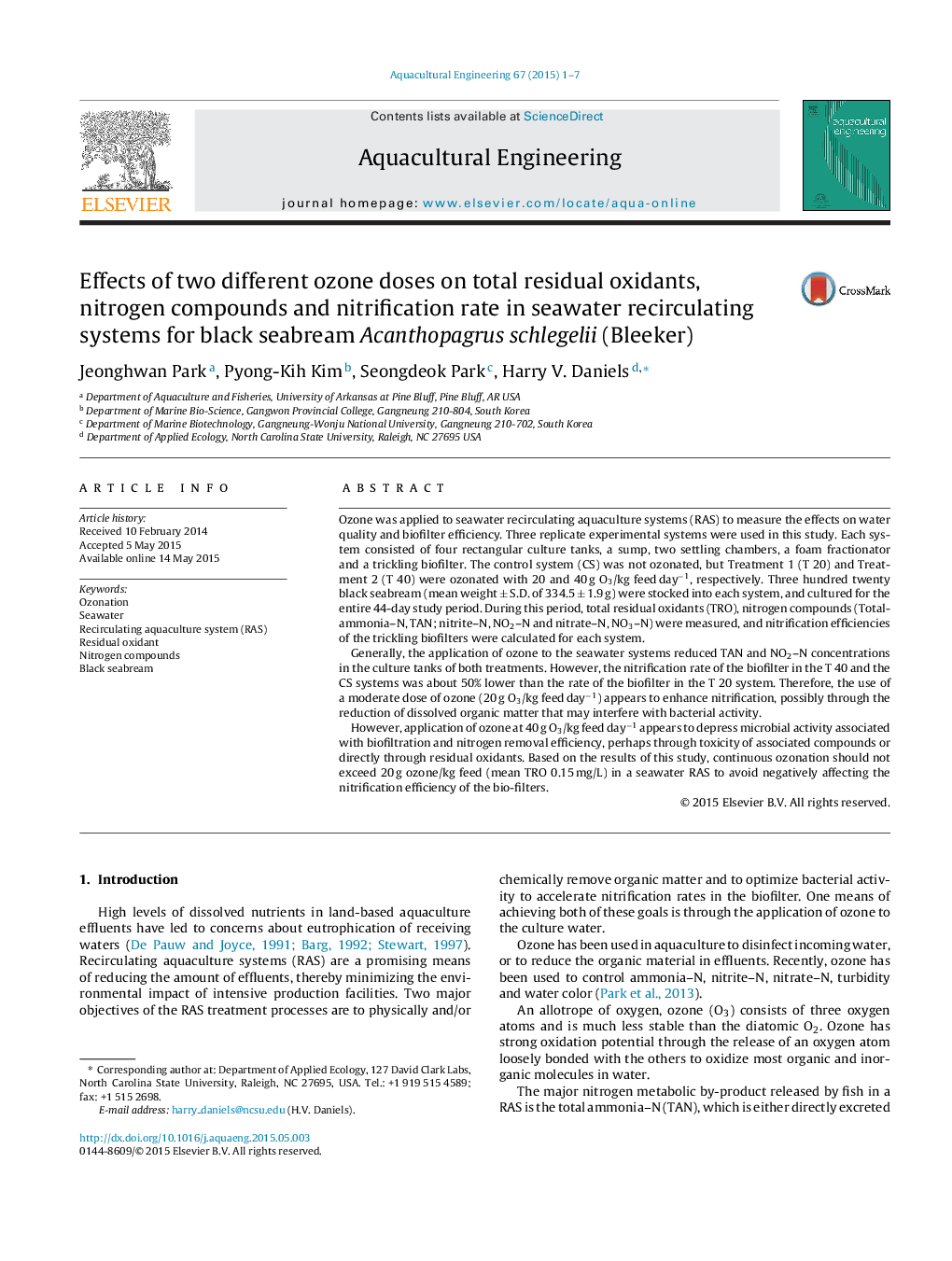| کد مقاله | کد نشریه | سال انتشار | مقاله انگلیسی | نسخه تمام متن |
|---|---|---|---|---|
| 4527164 | 1625703 | 2015 | 7 صفحه PDF | دانلود رایگان |

• Application of ozone at a rate of 20 g O3/kg feed day−1 to a seawater recirculating system caused a slight reduction in ammonia and nitrite levels but almost doubled nitrogen removal rates.
• Doubling the amount of ozone application did not change ammonia or nitrite levels but cause a 50% reduction in nitrogen removal rate compared to the control (no ozone) or the lower level of ozone dosage.
• Ozonation at 40 g O3/kg feed day−1 caused minor histological changes in cultured black sea bass.
Ozone was applied to seawater recirculating aquaculture systems (RAS) to measure the effects on water quality and biofilter efficiency. Three replicate experimental systems were used in this study. Each system consisted of four rectangular culture tanks, a sump, two settling chambers, a foam fractionator and a trickling biofilter. The control system (CS) was not ozonated, but Treatment 1 (T 20) and Treatment 2 (T 40) were ozonated with 20 and 40 g O3/kg feed day−1, respectively. Three hundred twenty black seabream (mean weight ± S.D. of 334.5 ± 1.9 g) were stocked into each system, and cultured for the entire 44-day study period. During this period, total residual oxidants (TRO), nitrogen compounds (Total-ammonia–N, TAN; nitrite–N, NO2–N and nitrate–N, NO3–N) were measured, and nitrification efficiencies of the trickling biofilters were calculated for each system.Generally, the application of ozone to the seawater systems reduced TAN and NO2–N concentrations in the culture tanks of both treatments. However, the nitrification rate of the biofilter in the T 40 and the CS systems was about 50% lower than the rate of the biofilter in the T 20 system. Therefore, the use of a moderate dose of ozone (20 g O3/kg feed day−1) appears to enhance nitrification, possibly through the reduction of dissolved organic matter that may interfere with bacterial activity.However, application of ozone at 40 g O3/kg feed day−1 appears to depress microbial activity associated with biofiltration and nitrogen removal efficiency, perhaps through toxicity of associated compounds or directly through residual oxidants. Based on the results of this study, continuous ozonation should not exceed 20 g ozone/kg feed (mean TRO 0.15 mg/L) in a seawater RAS to avoid negatively affecting the nitrification efficiency of the bio-filters.
Journal: Aquacultural Engineering - Volume 67, July 2015, Pages 1–7